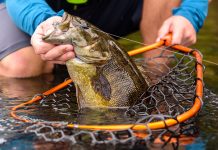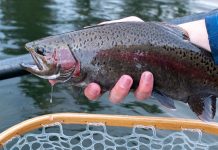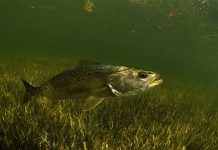If there’s one thing pro anglers know, it’s knots. Nothing is more important to landing a fish than a good knot, and nothing has a bigger chance of failure. Our experts agree, the best fishing knot is the one you tie well. It’s better to practice one or two connections until you can do them blindfolded in the dark. With that in mind, we asked the pros for their own favorite knots and the conditions in which they work best.
Marc Fryt // Plymouth, Michigan
Outdoor writer and photographer
When I’m fly fishing for trout, it is rare for me to use just one fly. Instead, I like to use two flies on a euro-nymphing or dry dropper rig.
To tie the dropper, I use a triple surgeon knot. This results in two ends I can tie a fly to. The seven-inch short end is the point end and the longer, 15-inch dropper is called the tag end. I can attach a dry fly to the point end and nymph to the tag end. Or, I can use a combination of heavier and lighter nymphs. When the fish are rising to very small midges, I like to use two dry flies: one smaller than the other. The larger dry fly helps me index where the smaller fly is floating.
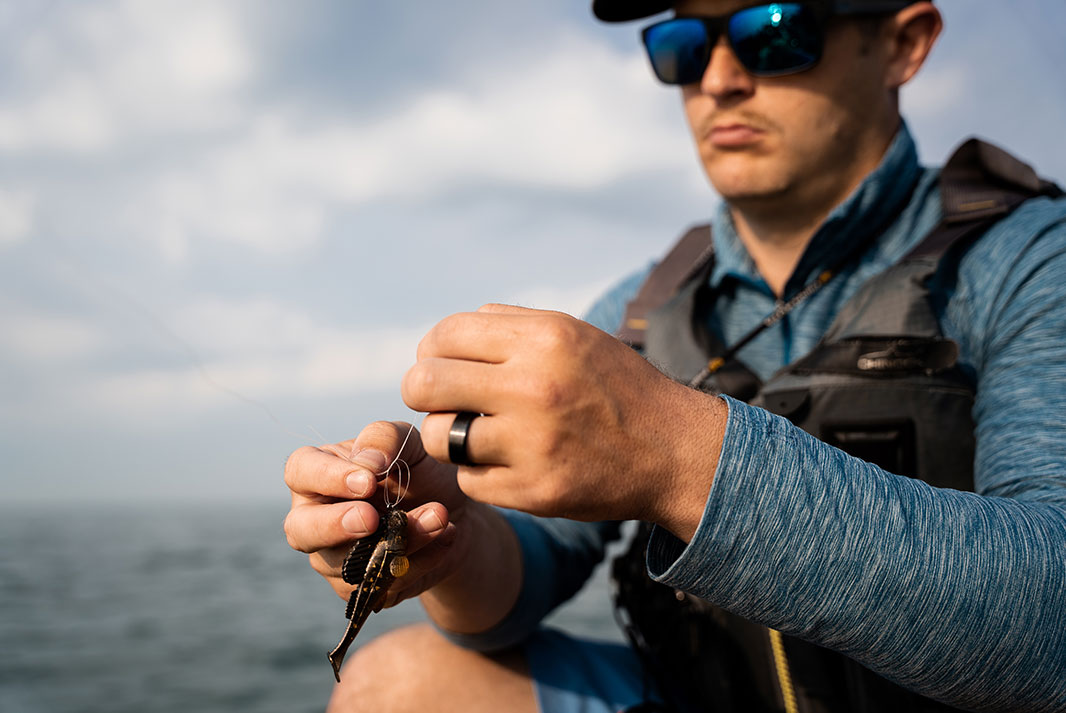
One more tip: If the tag line becomes too short, I clip it off just below the triple surgeons knot. Then, I use a uni knot to attach a new tag line above the triple surgeon knot. The new line will slide down the leader and the knot acts as a stopper. I can add a fresh tag end without retying the whole rig.
Brian Nelli // Palm Beach, Florida
Two-time EKFT champion and offshore guide
My stiff rig is an improvement on the traditional king rig. Instead of connecting the 60-pound wire to the treble hook eye, I run the wire through the hook eye, around the bend of the treble hook and back through the eye. Then I make my haywire twist with six twists to absorb shock and five barrel loops to finish off the knot. I connect the stinger to the bend in the lead hook. Make sure to tie the loop small enough so it can’t pass over the hook barb. The stiff rig keeps the hook from turning into the bait or tangling in the wire.
Justin Hausner // Waterloo, New York
Owner, Fuzzy Guppies Outfitters
The improved clinch knot is like hot sauce, I put it on everything. My father taught me how to tie it and there is still a satisfying feel as I watch the loops seat on the knot. I can use it with monofilament or braid.
To make tying the improved clinch knot easy, I insert my pointer finger into the first loop. I hold the mainline and tag end in the opposite hand and spin my finger, like I’m signalling a long-winded storyteller to wrap it up, to make seven wraps. Then, I remove my finger and pass the tag end through the loop. Even with cold hands and short-sighted eyes, I can tie this knot every time.
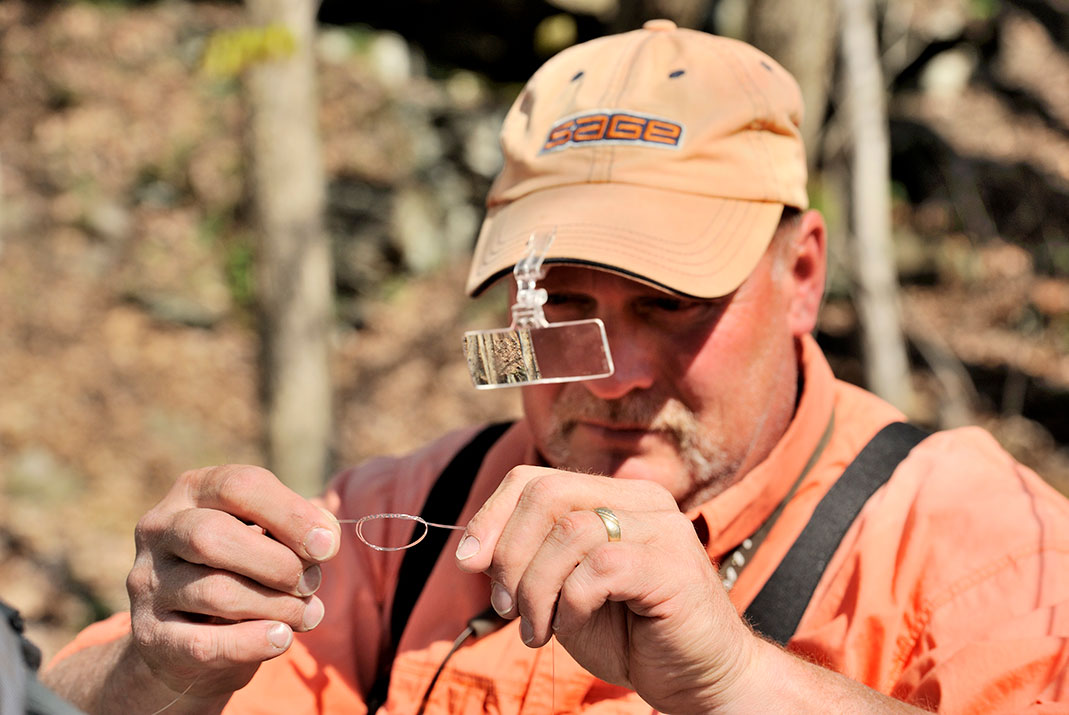
Brandon Barton // Pensacola, Florida
Emerald Coast Hobie Pro Staff and full-time fishing guide
For sight fishing, nothing beats the FG knot. In clear water, with spooky fish, I want to use the longest leader possible. To tie 50-pound AFTCO Saiko fluorocarbon leader to 65-pound Spiderwire braided line, I want the smallest knot possible to smoothly pass through the rod guides.
The FG knot is a jam knot with the braided mainline wrapping around the leader. The trick to tying an FG knot in the kayak is keep tension on the line. I put the rod in a rod holder and hold the leader with my teeth.
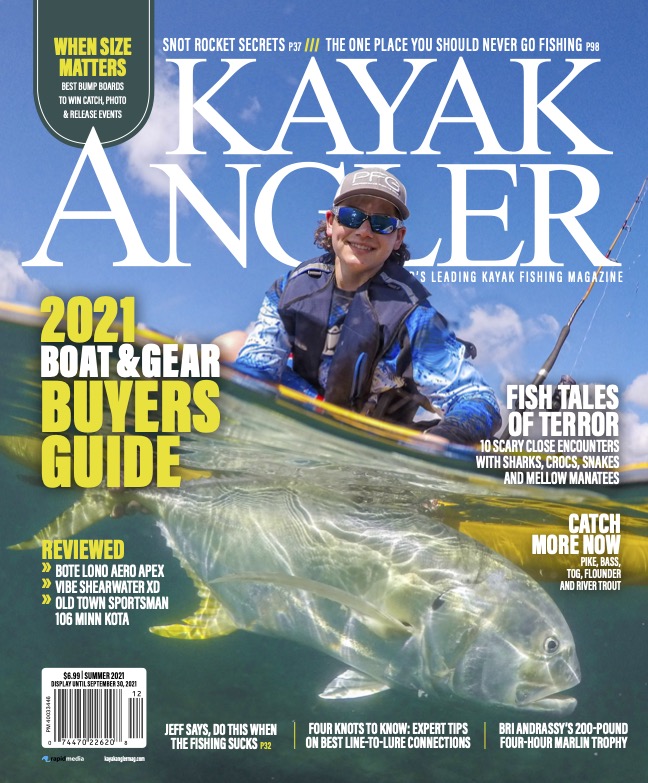 This article was first published in Kayak Angler Issue 45. Subscribe to Kayak Angler and get the magazine delivered to your front door. Download the Kayak Angler Magazine+ app to seamlessly glide between the digital archives, the latest articles and videos.
This article was first published in Kayak Angler Issue 45. Subscribe to Kayak Angler and get the magazine delivered to your front door. Download the Kayak Angler Magazine+ app to seamlessly glide between the digital archives, the latest articles and videos.
We compared these four knots to see which was best. In the end they were tied. | Feature photo: Bogdan Korostetskyi


